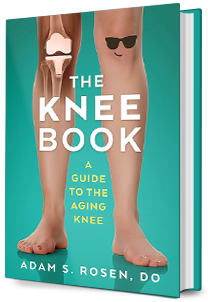Total Hip Replacement
Hip arthritis is an inflammation of the joint due to loss of cartilage. Arthritis may be due to simple wear and tear and age (osteoarthritis), injury and fractures (post-traumatic arthritis), or systemic diseases (rheumatoid arthritis or psoriatic arthritis).
Hip arthritis may cause pain, stiffness, ache, instability, catching, limping or difficulty in being an active individual. The diagnosis is made by taking a careful history, a physical examination and x-rays. When conservative care has failed to relieve pain and symptoms a person may be a candidate for total hip replacement.
A hip replacement replaces the arthritic hip socket with a new ball and socket. A stem is placed into the femur (thigh bone) with a ball attached to the top of the stem. Most stems are press fit or wedged into the bone. If the bone quality is poor the stem may be cemented or glued into place. On the cup side (acetabulum) a new metal cup is placed into the bone and a plastic liner is then placed into the metal cup.
As with any surgical procedure there are risks which may include infection, blood clots, dislocation, leg length discrepancy, pain, limp, fractures, injury to nerves or vessels, the need for a transfusion or the need for further surgery.
Hips can wear out over time or with excessive activity. If your hip replacement wears out you may need a revision.
You can find more detailed information about hip replacement surgery, as well as information about the risks, benefits and the recovery here






